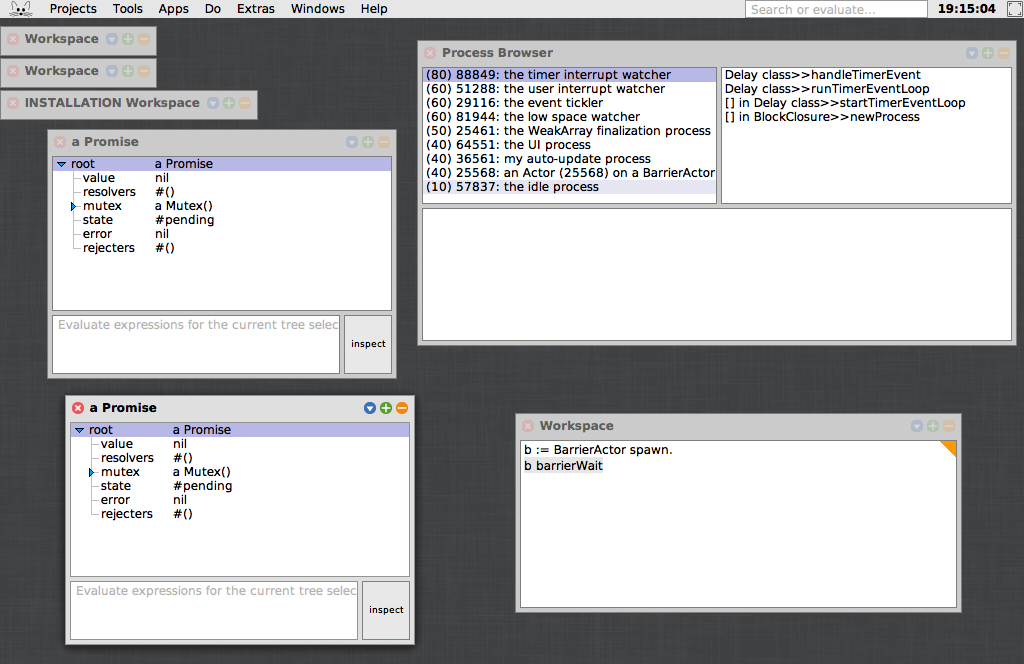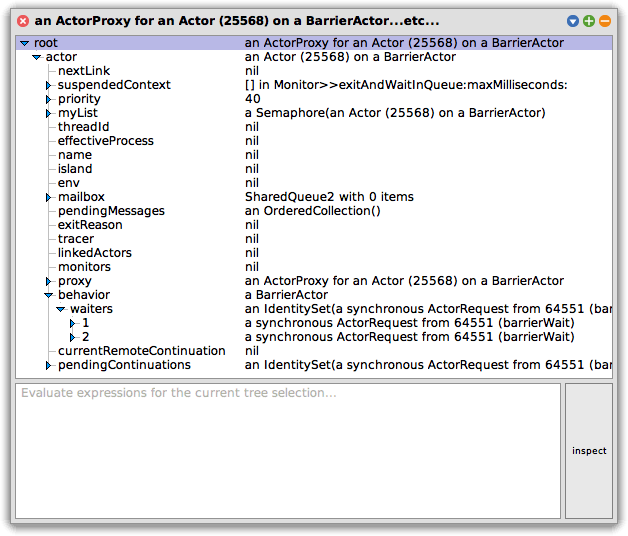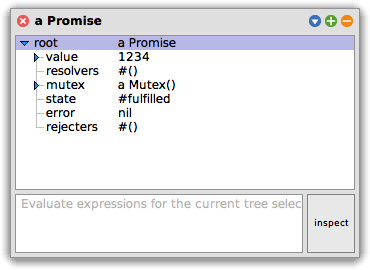Barrier
This tutorial introduces some more sophisticated control flow, achieved through postponing transmission of replies to requests.
BarrierActor
ActorBehavior subclass: #BarrierActor
instanceVariableNames: 'waiters'
classVariableNames: ''
poolDictionaries: ''
category: 'Actors-Demos'
Class BarrierActor is a simple ActorBehavior
that implements a barrier.
Clients may call #barrierWait, in which case they will not receive a
reply until some other client calls #releaseWaiters or
#releaseWaiters:.
Any value supplied to #releaseWaiters: is used as the resolved value
of waiting clients’ promises; #releaseWaiters supplies nil as this
value.
The instance variable waiters holds an IdentitySet of
ActorRequests, the waiting continuations.
Initialization
initialize
super initialize.
waiters := IdentitySet new.
Waiting for a value
barrierWait
waiters add: Actor caller.
Retrieving the current request by invoking Actor
class >> #caller
suspends the remote caller of
the actor until either resolveWith: or rejectWith: is called on
the resulting ActorRequest object.
Releasing the current set of waiters
releaseWaiters: anObject
waiters do: [ :c | c resolveWith: anObject ].
waiters := IdentitySet new.
Each of the waiting requests is released, with anObject as the reply
value given to the suspended caller via the promise
associated with the request.
releaseWaiters
self releaseWaiters: nil
Running an example
Exploring the behavior of BarrierActors in a workspace must be done
with some care because of the way calls to barrierWait block until a
releaseWaiters: arrives from another actor.
Instead of using blocking RPC, we will use Promises and Squeak’s explorer.
Creating a BarrierActor and some waiting promises
First, in a workspace, spawn a BarrierActor.
b := BarrierActor spawn.
Then, type in
b barrierWait
but instead of choosing “do it” or “print it”, right click on that
line and choose “explore it” (or press Shift-Alt-I).
Select the workspace window again, and choose “explore it” on the b
barrierWait line a second time.
Your screen should now look something like this:

Exploring the state of the BarrierActor
At this moment, the two Promises waiting for barrierWait to return
are associated with two instances of ActorRequest
held in the waiters instance variable of the BarrierActor.
If we “explore it” on b in our workspace, and drill down to see the
behavior object, we can see the two requests sitting where they
should:

Releasing the waiters
Finally, “do it” with the following expression in the workspace:
b releaseWaiters: 1234.
Both the promises have now changed—though the explorers do not automatically update!
To update the view, click on the triangle next to “root” in each explorer, to collapse the view of the promise, and then click a second time, to reopen it.
After this, both explorer views on the promises should look like this:

Cleaning up
Finally, we can terminate our BarrierActor.
b actor terminate.